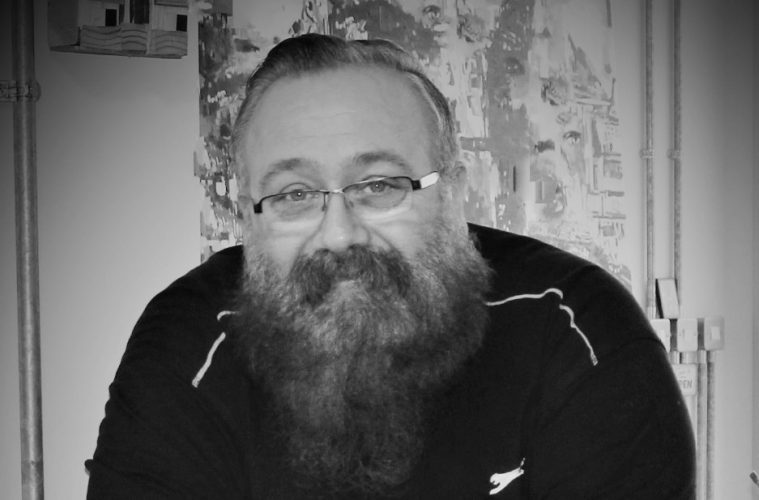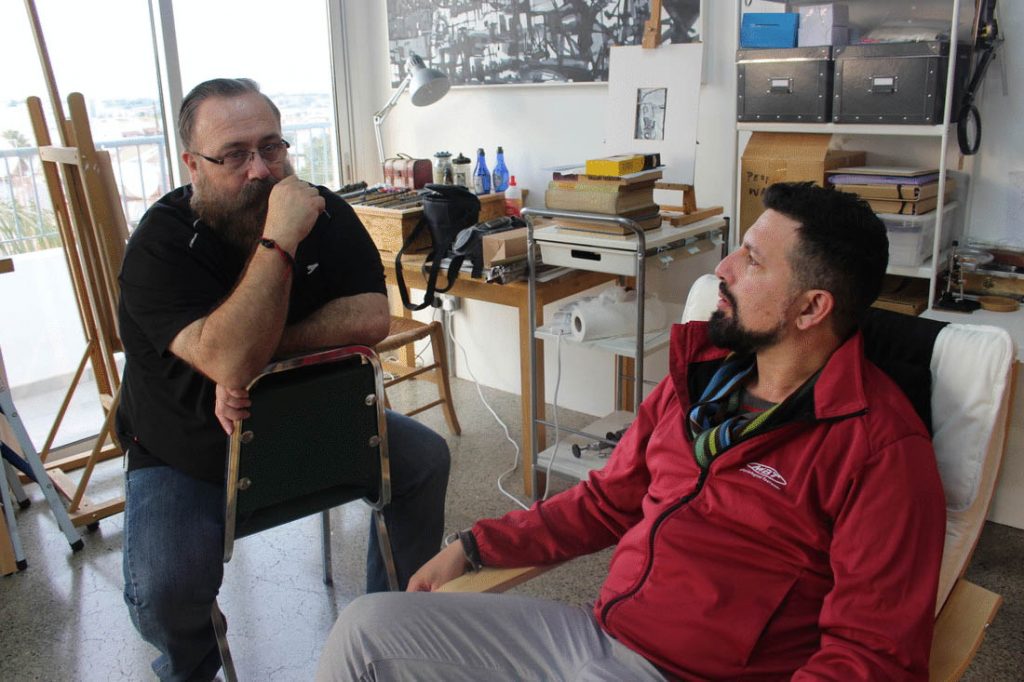BY CHRISTOS TSIAILIS
Διαβάστε τη συνέντευξη στα ελληνικά ακολουθώντας τον παρακάτω σύνδεσμο (Click here to read in Greek)
Born in England and of English and Greek-Cypriot descent, Andreas Tomblin now lives in Nicosia, Cyprus with his wife Christina and their two children. A noted painter and Assistant Professor at the University of Nicosia, Cyprus, his art has received international exposure in Juried and invited exhibitions and in public and private collections worldwide including UK, USA, Cyprus, China, Belarus, Finland, Romania, Lebanon, Italy, Albania and Egypt. Books and Style’s editor Christos Tsiailis talks with the internationally famous painter Andreas Tomblin.
CHRISTOS TSIAILIS: Dear Andreas, I’d like, if you don’t mind, to open this interview with your telling me the title of the painting you consider the most important that has ever been painted. Not the reasons for your choice. Just the title, please.
ANDREAS TOMBLIN: Picasso’s Guernica
C.T.: Great. I’ve invited you for an interview not over any specific success of yours, but for your work in general, since, as I have observed, you have personal and team participations in hundreds of exhibitions worldwide. However, there must be a moment throughout your career that you may consider more important. Can you share it with us?
A.T.: It has not happened yet and cannot happen yet as the journey I am on offers more questions than answers. However, one of the moments that I treasure the most was when a 12-year-old boy attended one of my solo exhibitions and bought one of my drawings with money he saved. This was a beautiful moment I will never forget.
C.T.: Having examined almost all your paintings, in most of them I have noticed the creation of a perplex lane like land expanding everywhere on the painting. Is this the line of your uniqueness and the viewer’s path to the paintings’ deciphering, one by one?
A.T.: It could be said that it’s a part of my personal visual language that is employed. As for the viewer, they interpret the information and messages in very personal ways that are specific to them, not just on a physical level but also a spiritual one as well. These are very complex coded forms that some cannot even comprehend when others will connect with and untangle their own truth.
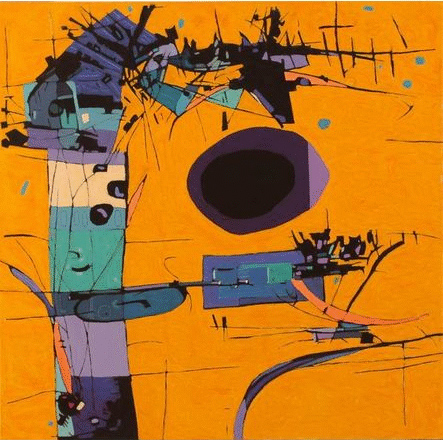 C.T.: In all your paintings there are hidden objects, broken in shape. Are the microcosms you create directly related to the subconscious archetypes you want your viewer to “capture”? And inside these microcosms, do you also envelop your own emotions, such as fear, fury, or other passions that you want to bring out and embellish?
C.T.: In all your paintings there are hidden objects, broken in shape. Are the microcosms you create directly related to the subconscious archetypes you want your viewer to “capture”? And inside these microcosms, do you also envelop your own emotions, such as fear, fury, or other passions that you want to bring out and embellish?
A.T.: One important thing that I should mention when addressing the creation of my paintings is that there are no prerequisites. The communication of information is very spontaneous and there is no formulistic plan. So feelings like fear, anger peace, etc. are part of not just myself but a collective conscience as we are all part of the same universe. These manifest into visual information as the work grows and develops on the canvas.
C.T.: By placing images on the canvas, abstract as they may appear, the painter’s soul is exposed. It is no coincidence that painting is called “visual” art, since it speculates something from reality. Because of this, have you ever felt vulnerable in the eyes of your nearby people?
A.T.: I have never felt vulnerable in anyone’s eyes only my own and gods. It is true the soul of the artist is exposed in the work that is why I feel it’s important for all artists to explore and examine themselves through their work, know who you are first then you will find the true reality.
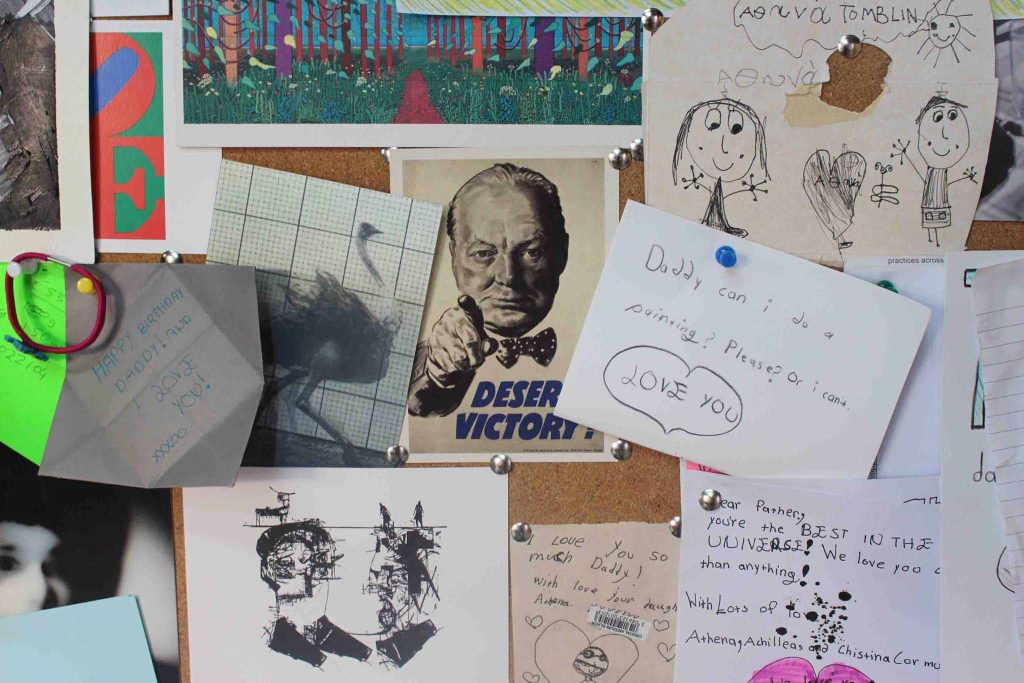 C.T.: There are many who claim that the artist has no need to communicate and be acquainted with the viewers and fans of his paintings. What is your personal opinion? Which art lovers do you think your art and technique touches?
C.T.: There are many who claim that the artist has no need to communicate and be acquainted with the viewers and fans of his paintings. What is your personal opinion? Which art lovers do you think your art and technique touches?
A.T.: First and foremost, I believe that art should never be created with money or fashion as its driving force. All art communicates on some level to an audience whether it’s a positive or negative reaction or assessment that is made. I personally do not create work to specifically communicate with people in a specific way. However, I would like to think that it is accessible to all people from all backgrounds providing they allow themselves to see with an open, acquiring mind.
C.T.: I was particularly interested in your paintings ‘Freedom’ and ‘Terminal 4’. A double question: in abstract art in particular, can the title incite the painting’s viewer for the subject or its understanding? And, how significant is an ‘objective’ or ‘subjective’ connection of the title with the painting?
A.T.: A paintings title means all things to all men. Although, I believe, however abstract a title may seem, it is connected in some way or form to the work. There is always a connection. For sure a title can inform and educate a viewer about the subject as it can also intrigue or hold emotional connections in very personal ways. It could also be seen to conform and pigeon hole work. The titles of my paintings ‘Freedom’ and ‘Terminal 4’ are directly connected to the work. The paintings are part of a larger body of work that explored the ‘Emma Lazarus’ poem ‘The New Colossus’ etched into the base of the Statue of Liberty.
C.T.: If one of your paintings were to be transformed into a real world, and since from what I’ve seen, you mostly capture the urban environment, in which major city would you place this world?
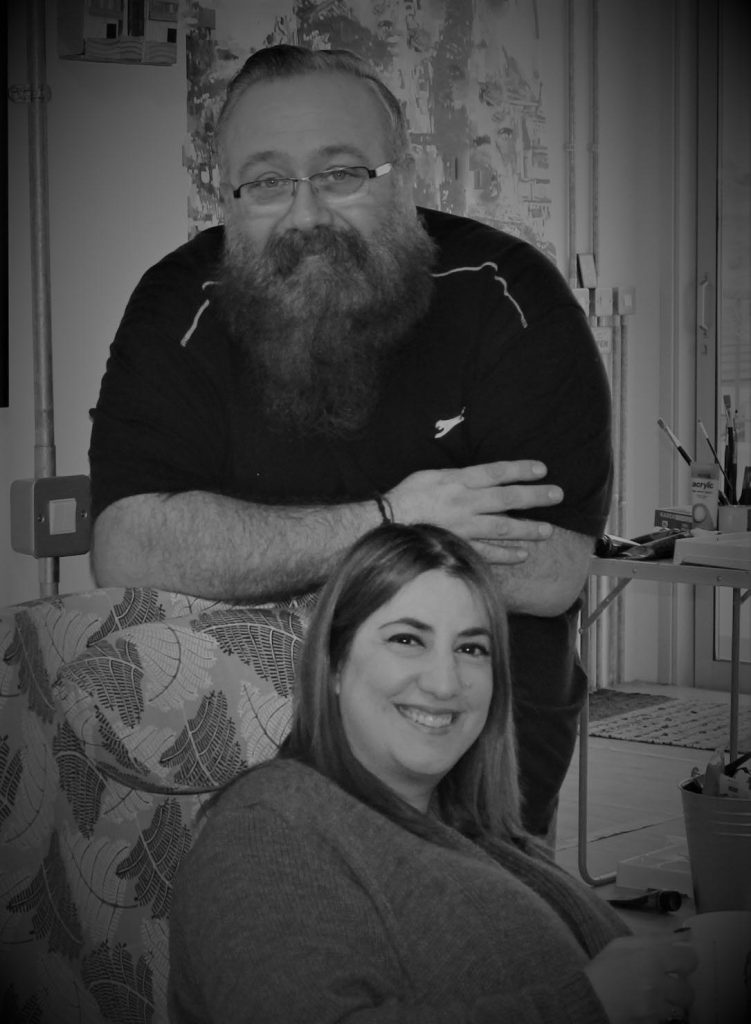 A.T.: I think the viewer is best answering this question as I see the work as a collective vision.
A.T.: I think the viewer is best answering this question as I see the work as a collective vision.
C.T.: You have lived on the island of Cyprus for many years, but you grew up in Great Britain. Two countries with very different light and images. How much Mediterranean do you think your paintings are? How much does the physiognomy of Cyprus affect you? A question I ask all the artists living on the island. Can the Sea separate the painters and their style from the rest of the world either positively or negatively, or do you not think that this is the case?
A.T.: Living in Cyprus for me has been a massive revelation. The strong natural light, vibrancy of color, and way of life are in stark contrast to the UK. This has affected every aspect of my work resulting in a clearer vision and creativity, which was stifled in the UK. I don’t think it has a direct connection to the sea, only to say it’s a part of nature and so part of all of us. But in the same breath an urban environment is also part of nature as we create it.
C.T.: How do you generally view the relationship of the Cypriot public with visual art? Is there an art market? Is there a response to painting exhibitions?
A.T.: Although there are some wonderful artists here in Cyprus we have seen Art opportunities, and support to the Arts and Culture slowly eroded at all levels over the years. This is due to maladministration of funds and nepotism resulting in the demise of the arts. The resulting lack of real monetary or educational investment and support at a national level is detrimental not only to the artists but public. This must change at all levels. The arts are the foundation to a society and culture they reflect who and what we are.
C.T.: When a painting of yours is sold to an individual or a museum, you automatically part with it. How do you deal with this feeling as an artist? What mechanisms have you developed to tolerate this admittedly traumatic divorce?
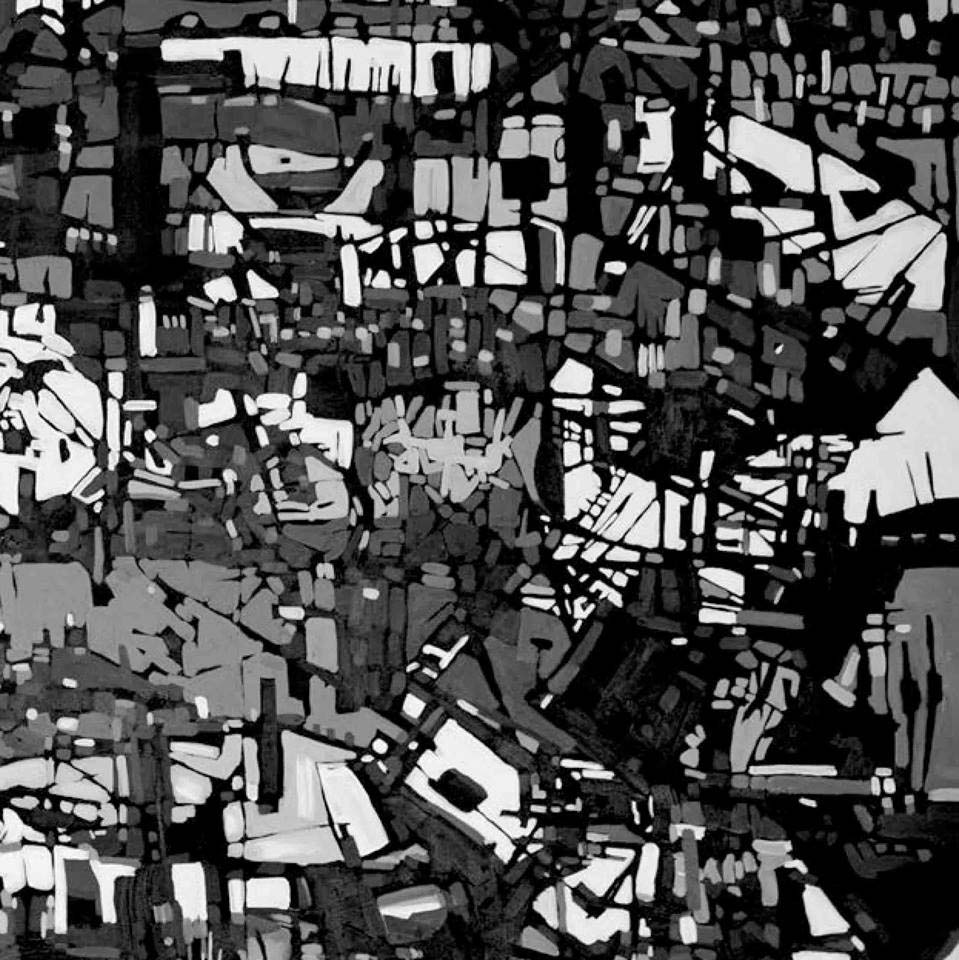 A.T.: Before I left the UK to live in Cyprus I burned all my previous work. I believe that an artist should never be precious about their work. My work does not have an emotional connection after its creation, I see it as part of a process, a stage or point of development which enabled greater knowledge and understanding of who and what I am.
A.T.: Before I left the UK to live in Cyprus I burned all my previous work. I believe that an artist should never be precious about their work. My work does not have an emotional connection after its creation, I see it as part of a process, a stage or point of development which enabled greater knowledge and understanding of who and what I am.
C.T.: When did you realize you wanted to become a professional painter and what you’re your opinion – makes a painter stand out?
A.T.: I knew that I wanted to become an artist from a very early age. Painting is just one of the mediums I use to communicate concepts and ideas. It’s a material I love and embrace but I am not a slave to it. To call myself a painter would not be 100% correct. However, I am an Artist that will never stop exploring the qualities of paint. What makes a painter stand out is what makes an artist stand out honesty to oneself and the ability to challenge and educate the viewer.
C.T.: The painter is also an art lover. Who are your favorite painters? Do you believe that there is a painter, contemporary or older, that has had a special influence on you?
A.T.: There are many painters whose vision interests me. From Patrick heron, Pablo Picasso and Joan Miró to Xu Bing and Wang Dongling. However, I get inspiration from many other stimuli. From science to literature.
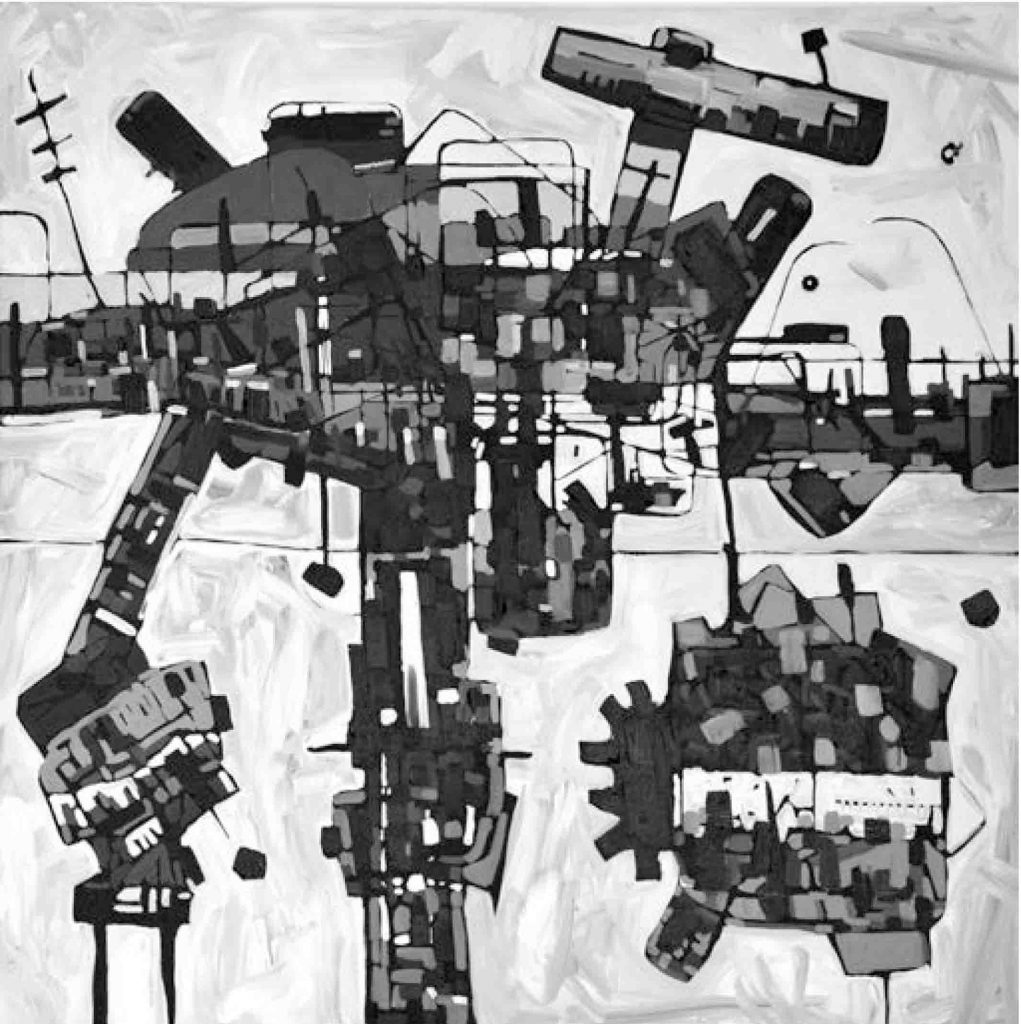 C.T.: Next target? What are your future plans?
C.T.: Next target? What are your future plans?
A.T.: Simply to keep progressing with my work and exploring and developing my personal visual language. To exhibit in more and more prestigious venues and to show my work to as widest audience as possible.
C.T.: I would like to thank you for this wonderful interview you’ve given me, I would appreciate it if you gave a wish for the magazine’s readers for 2018.
A.T.: For 2018 I wish good health and happiness to all the readers. Stay true to yourselves and be positive and think positively even in adversity. Only then will you manifest your hopes and dreams.
—
http://thecollectiongallery.eu/wp-content/uploads/2016/05/The_New_Colossus-Andreas-Tomblin.pdf

